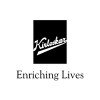Filter interviews by
Tata Steel Downstream Products Interview Questions and Answers
19 Interview questions
Specification limits define acceptable product performance, while control limits monitor process stability.
Specification limits are set by customer requirements or industry standards, e.g., a product must be between 10-20 mm.
Control limits are statistical boundaries derived from process data, e.g., a control chart may show limits at 12-18 mm.
Specification limits indicate what is acceptable; control limits indicate...
Cp and Cpk are metrics used to assess process capability and performance in manufacturing and quality control.
Cp (Process Capability) measures the potential capability of a process by comparing the width of the process spread to the width of the specification limits.
Cpk (Process Capability Index) measures how centered the process is within the specification limits, taking into account the mean and variability.
A Cp...
Confined spaces pose risks due to limited ventilation, leading to hazardous gas accumulation and potential health hazards.
Oxygen deficiency: Levels below 19.5% can cause unconsciousness or death.
Toxic gases: Carbon monoxide (CO) can be lethal even in small amounts.
Flammable gases: Methane can lead to explosions in confined spaces.
Asphyxiants: Nitrogen can displace oxygen, leading to suffocation.
Corrosive gases: Hy...
On-site emergency plans address immediate threats, while evacuation plans focus on safe exit procedures during emergencies.
On-site emergency plans include procedures for various emergencies like fires, chemical spills, or medical emergencies.
Emergency evacuation plans specifically outline the routes and methods for safely evacuating personnel from a building.
For example, an on-site emergency plan may include first...
Entropy is a measure of disorder or randomness in a system.
Entropy increases as the system becomes more disordered.
It is a thermodynamic quantity that describes the amount of energy in a physical system that is not available to do work.
Entropy can also be thought of as a measure of the number of possible arrangements of a system.
For example, a messy room has higher entropy than a clean room because there are more ...
The three laws of thermodynamics are fundamental principles in the study of energy and heat transfer.
First Law: Energy cannot be created or destroyed, only transferred or converted. For example, when a cup of hot coffee cools down, the energy is transferred to the surrounding air.
Second Law: Heat naturally flows from hot to cold objects, and entropy (disorder) tends to increase over time. For example, an ice cube ...
Yes, the flow of free electrons in a conductor is called current.
Current is the flow of electric charge through a conductor.
In a conductor, such as a wire, free electrons move in response to an electric field, creating current.
The unit of current is the ampere (A).
Examples of conductors include metals like copper and aluminum.
Current is the flow of electric charge, measured in amperes, and is essential for powering electrical devices.
Current is defined as the rate of flow of electric charge.
Measured in amperes (A), where 1 ampere equals 1 coulomb of charge per second.
There are two types of current: direct current (DC) and alternating current (AC).
DC flows in one direction, like in batteries, while AC changes direction periodically, as ...
A transformer is an electrical device that transfers electrical energy between circuits through electromagnetic induction.
Transforms voltage levels: Steps up or steps down voltage as needed.
Consists of primary and secondary coils: The primary coil receives input voltage, while the secondary delivers output voltage.
Used in power distribution: Essential for transmitting electricity over long distances.
Example: A ste...
Forgings are metal components that are shaped by compressive forces, typically through hammering or pressing.
Forgings are typically stronger and more reliable than castings or machined parts.
Common forging processes include open-die forging, closed-die forging, and ring rolling.
Examples of forged components include crankshafts, connecting rods, and gears.
Forgings are often used in industries such as automotive, ae...
Tata Steel Downstream Products Interview Experiences
37 interviews found
I appeared for an interview in Feb 2025.
(2 Questions)
- Q1. T/s qa tester with machine maintainance
- Q2. Utm machine sample testing
I appeared for an interview in Feb 2025, where I was asked the following questions.
- Q1. What are Cp and Cpk, and how are they used in process capability analysis?
- Ans.
Cp and Cpk are metrics used to assess process capability and performance in manufacturing and quality control.
Cp (Process Capability) measures the potential capability of a process by comparing the width of the process spread to the width of the specification limits.
Cpk (Process Capability Index) measures how centered the process is within the specification limits, taking into account the mean and variability.
A Cp valu...
- Q2. What is the difference between specification limits and control limits?
- Ans.
Specification limits define acceptable product performance, while control limits monitor process stability.
Specification limits are set by customer requirements or industry standards, e.g., a product must be between 10-20 mm.
Control limits are statistical boundaries derived from process data, e.g., a control chart may show limits at 12-18 mm.
Specification limits indicate what is acceptable; control limits indicate how ...
Interview Preparation Tips
(2 Questions)
- Q1. Introduce yourself
- Q2. What work you have done in past
(2 Questions)
- Q1. Introduce yourself
- Q2. Explain your design work
(2 Questions)
- Q1. Where you have got challenges in your profile
- Q2. What skills do you have to help come out from that situations
Interview Preparation Tips

Test in apititude you advise in this better position and most great in company
(5 Questions)
- Q1. Different between Forgings and casting
- Ans.
Forging involves shaping metal through compression, while casting involves pouring molten metal into a mold.
Forging involves shaping metal through compressive forces, while casting involves pouring molten metal into a mold to solidify.
Forging typically results in stronger and more durable parts compared to casting.
Forging is a more precise process that allows for tighter tolerances, while casting is more suitable for c...
- Q2. What is the forgings
- Ans.
Forgings are metal components that are shaped by compressive forces, typically through hammering or pressing.
Forgings are typically stronger and more reliable than castings or machined parts.
Common forging processes include open-die forging, closed-die forging, and ring rolling.
Examples of forged components include crankshafts, connecting rods, and gears.
Forgings are often used in industries such as automotive, aerospa...
- Q3. What is the casting
- Q4. Process in casting
- Ans.
Process in casting involves pouring molten metal into a mold to create a desired shape.
Mold preparation is crucial for successful casting
Molten metal is poured into the mold cavity
Cooling and solidification of the metal takes place inside the mold
The casting is removed from the mold and finished as needed
- Q5. Process in forging
- Ans.
Forging is a manufacturing process where metal is shaped by applying compressive forces using a hammer or press.
Metal is heated to a high temperature to make it more malleable
The metal is then placed on a die and struck with a hammer or pressed to shape it
Forging can be done using different techniques like open-die forging, closed-die forging, and impression-die forging
Interview Preparation Tips
Firstly thank you for this opportunity
I applied via Campus Placement and was interviewed before Sep 2023. There were 2 interview rounds.
Modernization of Small Manufacturing Businesses Boon or Bane
(2 Questions)
- Q1. What are the three laws of thermodynamics ?
- Ans.
The three laws of thermodynamics are fundamental principles in the study of energy and heat transfer.
First Law: Energy cannot be created or destroyed, only transferred or converted. For example, when a cup of hot coffee cools down, the energy is transferred to the surrounding air.
Second Law: Heat naturally flows from hot to cold objects, and entropy (disorder) tends to increase over time. For example, an ice cube melti...
- Q2. What is entropy
- Ans.
Entropy is a measure of disorder or randomness in a system.
Entropy increases as the system becomes more disordered.
It is a thermodynamic quantity that describes the amount of energy in a physical system that is not available to do work.
Entropy can also be thought of as a measure of the number of possible arrangements of a system.
For example, a messy room has higher entropy than a clean room because there are more possi...
Interview Preparation Tips
- Mechanical Engineering
I applied via Campus Placement and was interviewed in Nov 2023. There was 1 interview round.
(2 Questions)
- Q1. In which situation would you use a transformer?
- Q2. Explain two dangers of working with electricity.
Interview Preparation Tips
Skills evaluated in this interview
I applied via Job Portal
I was very nice and nice and beautiful .
Topic was techno agriculture is boon or curse
(1 Question)
- Q1. What is your role and responsibilities
(1 Question)
- Q1. Tell me about your most successfuly Engineer project
Top trending discussions






Tata Steel Downstream Products Interview FAQs
Some of the top questions asked at the Tata Steel Downstream Products interview -
The duration of Tata Steel Downstream Products interview process can vary, but typically it takes about less than 2 weeks to complete.
Tell us how to improve this page.
Tata Steel Downstream Products Interviews By Designations
- Tata Steel Downstream Products Mechanical Engineer Interview Questions
- Tata Steel Downstream Products Manager Interview Questions
- Tata Steel Downstream Products Sales Manager Interview Questions
- Tata Steel Downstream Products Deputy Manager Interview Questions
- Tata Steel Downstream Products PHP Developer Interview Questions
- Tata Steel Downstream Products Logistics Manager Interview Questions
- Tata Steel Downstream Products Intern Interview Questions
- Tata Steel Downstream Products General Manager Interview Questions
- Show more
Interview Questions for Popular Designations
Overall Interview Experience Rating
based on 38 interview experiences
Difficulty level
Duration
Interview Questions from Similar Companies
Tata Steel Downstream Products Reviews and Ratings
based on 371 reviews
Rating in categories
|
Deputy Manager
125
salaries
| ₹5 L/yr - ₹12 L/yr |
|
Manager
59
salaries
| ₹6 L/yr - ₹16 L/yr |
|
Sales Manager
21
salaries
| ₹4.8 L/yr - ₹14.5 L/yr |
|
Senior Manager
20
salaries
| ₹9.6 L/yr - ₹23.5 L/yr |
|
Maintenance Manager
16
salaries
| ₹6.5 L/yr - ₹15.6 L/yr |

SHYAM METALICS AND ENERGY

Jai Balaji Group

Electrotherm

Welspun Corp
- Home >
- Interviews >
- Tata Steel Downstream Products Interview Questions













